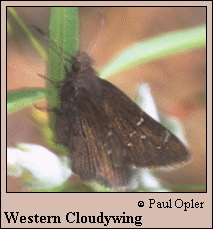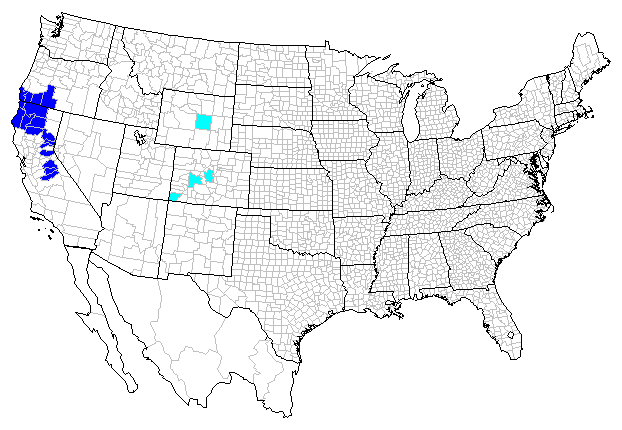 |
 

 |



Western Cloudywing (Thorybes diversus Bell)
Wing span: 1 1/4 - 1 1/2 inches (3.2 - 3.8 cm).
Identification: Upperside is dull brown with small pale spots. Males lack a costal fold. Underside is dull brown with gray scaling at margins; hindwing with indistinct dark bands.
Life history: To await females, males perch in small forest openings. Eggs are laid singly on the host plant.
Flight: One brood from June-July.
Caterpillar hosts: Cow clover (Trifolium wormskjoldii) in the pea family (Fabaceae).
Adult food: Flower nectar.
Habitat: Small openings in coniferous forests.
Range: Local and scarce. South Cascade mountains of Oregon and the Sierra Nevada of California.
Conservation: Seems to require open forest understory in yellow pine forests. Forest succession or replacement due to fire suppression may be a threat.
The Nature Conservancy Global Rank: G3 - Very rare or local throughout its range or found locally in a restricted range (21 to 100 occurrences). (Threatened throughout its range).
Management needs: None reported.
References:
Scott, J. A. 1986. The butterflies of North America. Stanford University Press,
Stanford, Calif. 583 pages, 64 color plates.
Tilden, J. W. 1986. A field guide to western butterflies. Houghton-Mifflin Co.,
Boston, Mass. 370 pages, 23 color plates.
Author: Jane M. Struttmann

